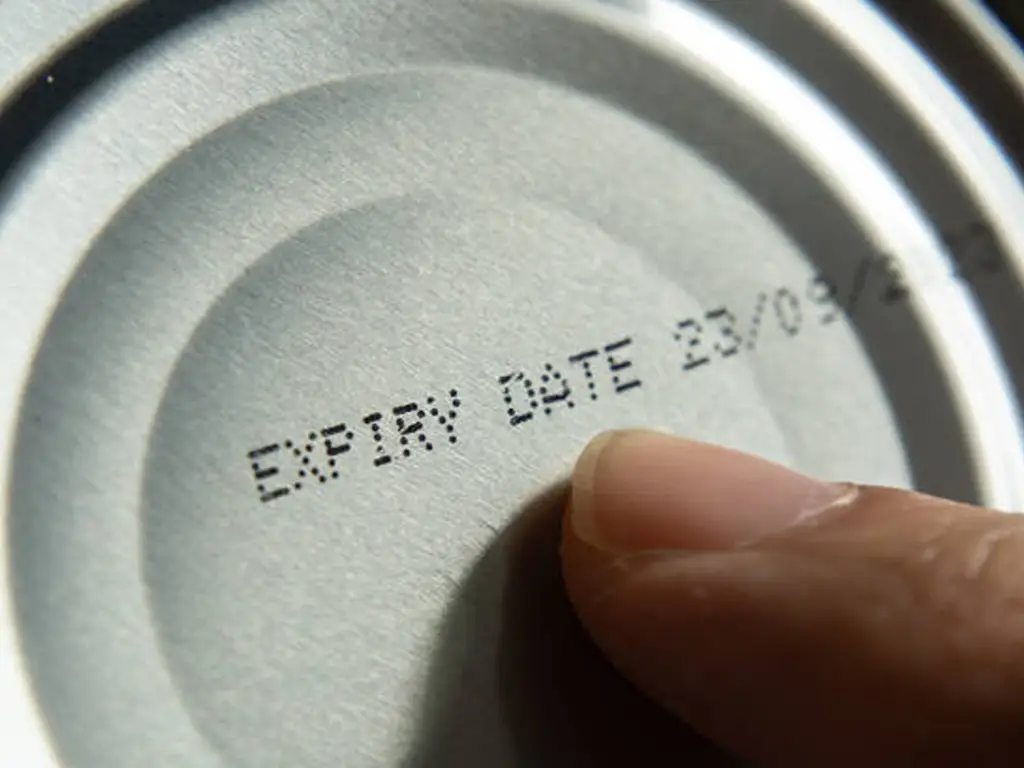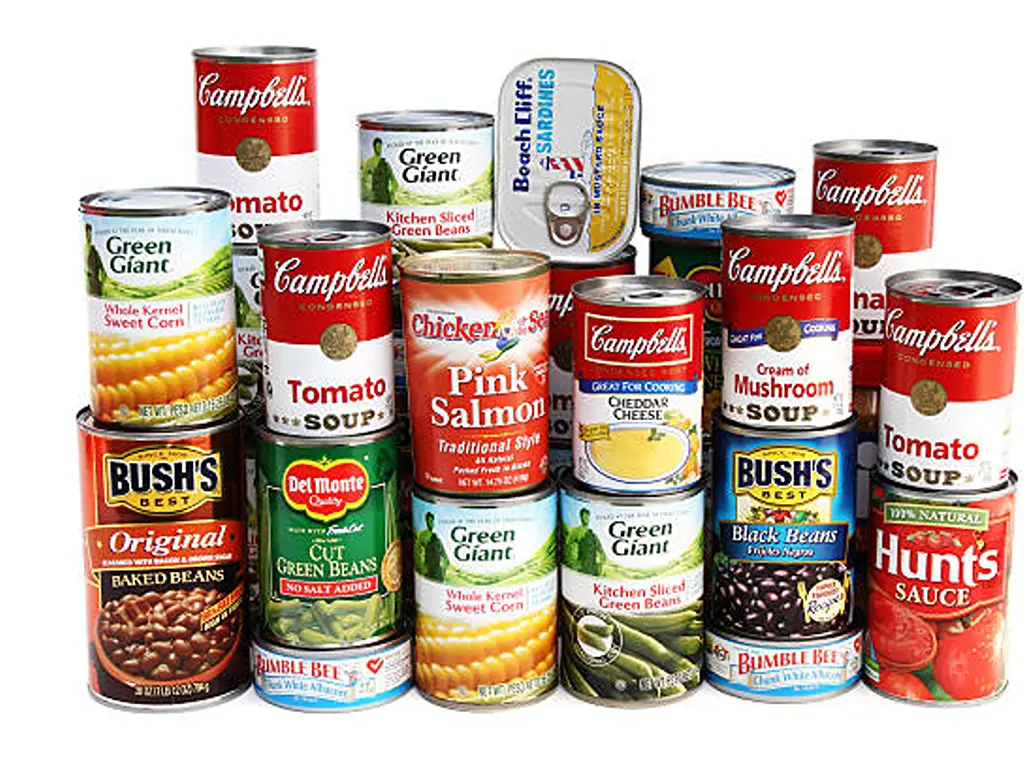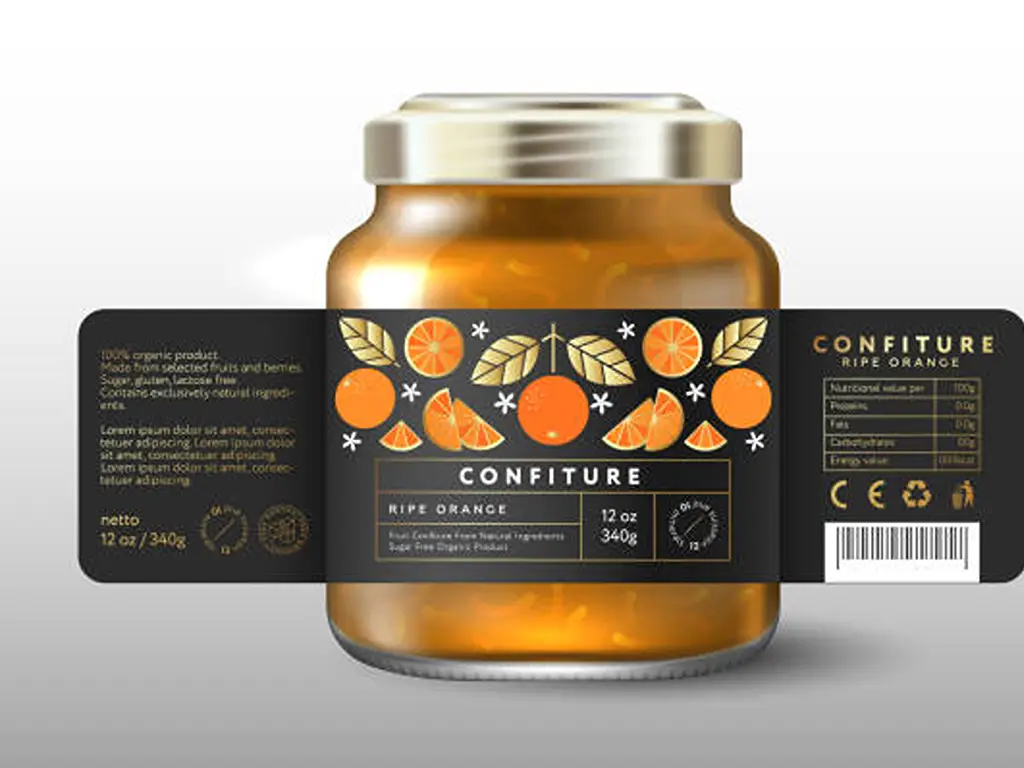What Does “Best By” Really Mean on Canned Foods?
Regarding the knowledge of how long canned food can last and remain fit to be consumed, it is important to understand the date labels properly. These dates, which are frequently misinterpreted, do not always have anything to do with food safety. Best By, Use By, and Sell By are all labels used in the commercial food industry, with each label having a different meaning, and none of the labels directly indicating that the food is unsafe to eat after that date.

- Best By: This is a date recommended by the manufacturer, and it is supposed to show the date of the product’s shelf life at the peak of its taste, texture, and all-around quality of the product. It is not a safety deadline. As an example, a can of chili or peaches past its Best By date might be safe to consume, even though the food might have lost a little bit of its quality.
- Use By: This date is more commonly associated with perishable foods, and it would not be found on a canned product, but if you ever find it on a canned product, know it represents a date that is the last recommended date for optimal product quality. It still does not represent a hard safety cut-off unless certain regulations for a small number of products, like infant formula in the U.S., are controlled by safety regulations.
- Sell By: This label is targeted at retailers and tells them how long to display the merchandise. It is not consumer-oriented and does not represent food safety or quality beyond the date. Long after the Sell By date, assuming the food is stored properly, many canned foods are still safe to eat and stable.
If stored correctly in a dry and temperature-regulated environment, canned foods are safe to eat long past the stated dates, often for years. It is, however, necessary to check the packaging. Any cans that are bulged, rusted, dented, or showing moisture or spoilage should be discarded.
Shortly, these date labels are a statement of quality rather than expiration. Canned goods can be safe well after the date printed on them with the original packaging and proper food storage.
How Canning Preserves Food: A Quick Look at the Science
Canning involves heat and an airtight container to avoid food spoilage. It begins with the heating of the food to such a high temperature that kills the bacteria, the yeasts, the molds, in particular, the most harmful pathogens, such as the Clostridium botulinum (the cause of botulism).
After sterilization, the food is placed in airtight containers, most often metal cans or glass jars, but when it is hot. A vacuum is created as it cools down, and this does not allow new microorganisms to enter. It is this oxygen deprivation, coupled with the sterile atmosphere, that makes canned food have such a long shelf life.

The method varies depending on the food type:
- To be safe, low-acid foods (e.g., meats, beans, vegetables) should be processed at higher temperatures, which requires pressure canning.
- There are also high-acid foods (such as tomatoes or peaches) that can safely be preserved at reduced temperatures, as the acidity inhibits bacterial growth.
The objective in the two instances is identical: to make food safe and prolong shelf life, without having to employ refrigeration. Naturally, to preserve food quality, it is essential to store it in a dry location, without moisture or sharp changes in temperature.
How Long Does Canned Food Last? (General Shelf Life by Category)
Canned food forms the staple of long-term food supply, disaster planning, and convenience in general. However, how long is it? It can vary with a few factors- the kind of food, the acidity of the food, the way of processing, and the storage conditions.
By general rule, commercially canned foods may last up to 12 months to 5 years or even more, provided that they are placed in a cool and dry environment. Nevertheless, not every can is the same. This is the breakdown by category of food so that you can get a better idea of what the shelf life should be, and what are the important storage options and precautions.
| Categoria | Esempi | Acidity Level | Typical Shelf Life | Notes & Considerations |
| Canned Meats | Beef, chicken, ham, luncheon meat, broths | Low-acid | 3 – 5 years | Prone to botulism if not processed correctly; check for bulging, dents, or rust. |
| Pollame | Canned turkey, chicken stew | Low-acid | 3 – 5 years | Similar to red meat; ensure airtight seal and avoid exposure to moisture or heat. |
| Seafood | Tuna, sardines, salmon, mackerel, crab meat | Low-acid | 3 – 5 years | High-fat content may cause flavor degradation over time. |
| Legumes & Beans | Black beans, baked beans, garbanzo, chili | Low to mixed | 2 – 5 years | Moisture-sensitive; avoid damaged or swollen cans. |
| Vegetables | Green beans, corn, carrots, potatoes, mushrooms | Low-acid | 3 – 5 years | Requires high-heat processing; store in a cool, dark pantry. |
| Frutta | Peaches, pears, pineapple, fruit cocktail | High-acid | 12 – 24 months | Acid helps preserve, but may erode the can lining, affecting taste and nutrition. |
| Tomato Products | Tomato paste, diced tomatoes, sauces | High-acid | 12 – 18 months | High acidity is preservative, but can compromise can integrity over time. |
| Soups & Broths | Cream soups, chicken noodle, pea soup | Low to neutral | 2 – 4 years | Cream-based soups may degrade faster. Check texture and smell upon opening. |
| Pickled/Brined Items | Pickles, sauerkraut, hot peppers | High-acid / salty | 1 – 2 years | Long-lasting due to acidity and salt, but inspect for corrosion or seal failure. |
| Prepared Meals | Chili, curry, beef stew, pasta meals | Mixed foods | 2 – 3 years | Multi-ingredient items are more sensitive to storage conditions and packaging quality. |
| Dessert-Type Cans | Apple sauce, fruit preserves, canned peaches | High-sugar/acid | 1.5 – 2 years | Sugar preserves, but may alter taste/texture. Look for settling or discoloration. |
| Baby Food (Canned) | Pureed fruits, veggies, meats | High or low-acid | 6 – 12 months | Follow Use By date strictly; do not consume if expired. |
| Home-Canned Foods | Homemade jams, tomato sauce, stews | Varies | Best within 1 year | Sterility is hard to guarantee at home. Use within a year and label with date canned. |
How to Know If Canned Food Has Gone Bad
The ‘Best By’ or ‘Expiration Date’ is not the only indicator of whether or not canned food is safe to consume. What usually speaks louder is the state of the container. Examine the seal by looking for bulging, deep dents (particularly around the seams), rust, or leaks, as all of these are indications that the seal is no longer intact. When a seal is broken, air and bacteria can get in, and the food is more prone to spoilage and even dangerous contamination such as botulism in low acid foods. In the case of glass jars, do not buy jars with popped lids, broken seals, or cloudy contents.
Be careful even after opening. When the contents have an unusual smell, are discolored, foamy, or slimy, it is a clear indication that the food has gone bad. And you never, never, ever taste canned food to taste it–botulinum toxin is deadly even in minute quantities and has no flavor or smell. The basic, yet very important rule is to throw it out when in doubt. Properly storing canned foods, checking them regularly, and knowing what the warning signs are will go a long way in preserving the food and the quality of the product.
How to Store Canned Food for Maximum Shelf Life
The total shelf life, nutrition, and safety of canned goods heavily depended on proper storage methods. If you’re organizing your pantry or building an emergency supply, here are some vital guidelines to consider.

- 1. Keep Cans in a Cool, Stable Temperature
At temperatures between 50-70°F (10-21 °C), canned food can last the longest. Do not keep cans close to heat, such as ovens, stoves, or water heaters. Similarly, do not store them in places where they could freeze, like unheated garages or close to freezers, since low temperatures will lead to expansion and loosening of the seal, and will shorten shelf life.
- 2. Store in a Dry Place
One of the greatest risks to canned products is moisture. Rust occurs under damp conditions, particularly at seams and lids. The rusting can also be not only a cosmetic problem, but it can also make the can weak, and it can bring in air and microorganisms, which lead to spoilage. This should be in a dry place such as a pantry or cabinet that is not near pipes or condensation.
- 3. Organize and Rotate Stock
Apply the rule of FIFO, First in, first out. Put your canned goods in a way that the older ones are placed in the front, and they are used first. This easy measure would keep forgotten cans from expiration and minimize food waste. To be even more in control, you may label cans with the date of purchase or use a list or an App to keep an inventory.
- 4. Avoid Excess Weight or Pressure
Never pile heavy boxes or other objects directly upon your canned food. The structure may be weakened or the seal may be broken due to even minor dents, and this may result in contamination or spoilage with the passage of time. This is because you should always handle your food containers carefully so as to maintain the quality of the product.
Home-Canned vs Commercially-Canned Foods: Key Differences
There is a remarkable difference between home-canned and commercially-canned foods—how safe, durable, and reliable they are when stored. While both home-canned foods and commercially-canned foods aim to preserve ingredients and extend shelf life, home-canned foods are riskier in terms of food quality and safety. Long-term store safety is reliant on both food quality and safe storage.
Here’s a distinct outline comparing the two:
| Categoria | Commercially-Canned Food | Home-Canned Food |
| Processing Method | Industrial sterilization using high heat and vacuum sealing | Manual canning using pressure or boiling water bath methods |
| Regulation & Oversight | Strictly regulated by the USDA and the FDA | No formal oversight; success depends on user knowledge and technique |
| Materiale di imballaggio | Durable metal food containers resistant to dents, rust, and moisture | Glass jars with metal lids; more vulnerable to seal failure |
| Durata di conservazione | Typically 2–5 years (with proper storage and intact packaging) | Best consumed within 1 year for safety and food quality |
| Rischio per la sicurezza alimentare | Very low if the packaging is in good condition and stored correctly | Higher risk—especially with low acid foods and improper technique |
| Condizioni di conservazione | More tolerant of minor temperature changes | Requires a cool, dry place with minimal fluctuation |
| Ideale per | Long-term pantry stock, commercial supply, disaster preparedness | Seasonal produce preservation, small batches, personal use |
| Example Foods | Stews, soups, vegetables, chili, meats, peaches | Jams, tomato sauce, fruits, pickles, home-cooked broths |
The Role of Packaging in Extending Canned Food Shelf Life
The shelf life of canned food is influenced by numerous factors, including food, level of acidity, and storage conditions. Nevertheless, there is one aspect that should not be ignored: the quality and consistency of the process of packaging itself.
Packaging is an important part of actual production since it defines whether canned food may be fresh, nutritious, and safe in the long term. Air bubbles or voids that may be present during filling may also cause oxygen exposure, food oxidation, and microbial growth, all of which cause a reduced shelf life. Improperly sealed cans are even more likely to leak, swell, or become contaminated with a serious food safety hazard that may include deadly botulism. Poor sterilization can also facilitate the survival of yeast and bacteria, which deteriorate the quality of the food and its taste.
Automated packaging equipment is replacing manual packaging processes in more food manufacturers in the effort to enhance sealing integrity and stability in production. Automated systems not only guarantee correct filling and reduce the remaining air but also help to use such technologies as vacuum nitrogen flushing and modified atmosphere packaging, which slows down oxidation significantly and prolongs freshness. In the meantime, the current sealing and sterilizing facilities are capable of providing high-quality sealing power and bacterial protection to ensure the safety of the product even more.
With an ever-competitive market, food manufacturers that have the capability of packaging their products with high efficiency stand in a better place to control the quality of their products, increase their shelf life, win consumer confidence, and easily penetrate other markets that have higher food safety regulations.
What Food Manufacturers Should Know About Shelf Life and Labeling

With the ever-growing food trade globally, the world is projecting more demands on labeling regulation and traceability of canned food. Clear shelf life labeling is not only necessary to give transparency to the consumers but also a requirement in the key markets like Europe, Southeast Asia, and the Middle East.
As an illustration, the European Union requires that the labels of canned foods should contain important information that includes production batch number, date of manufacture, expiry date, and storage conditions in legible fonts and proper languages. The U.S. FDA regulates labels of food products by indicating the batch number and stating unambiguously the date of “Best By” or “Use By” as well as maintaining complete traceability of the product information down to the production phase. Similarly, several markets in Southeast Asia and the Middle East are also getting strict on label authenticity and as well as multilingual labeling.
To satisfy these high export standards, an increasing food processing firms are incorporating automatic traceability and labeling models into their production lines. Manufacturers can use coding machines, automatic labeling equipment, and barcode/QR code systems to:
- Accurately label shelf life and batch information to ensure full product lifecycle traceability;
- Respond quickly to recalls and regulatory audits, enhancing brand credibility;
- Streamline export processes and improve customs clearance efficiency.
Production-wise, automated labeling and traceability systems not only enhance efficiency but also enable companies to construct more dependable data chains, especially since they serve as a firm foundation towards compliance in international trade. Nowadays, when the global market is becoming more regulated, the food companies that are armed with powerful labeling and traceability systems have better chances of being trusted by the importers and the retail distributors.
How to Choose the Right Packaging Equipment to Extend Canned Food Shelf Life
When it comes to the production of canned food, packaging equipment directly affects product sealing and its shelf life. Effective and dependable automated machines increase productivity and also guarantee freshness and safety during storage and distribution.
Levapack is a company that deals with can packaging machines with experience of 18 years in the industry. Its product range includes filling, sealing, and labeling machines-facilities like vacuum sealing, nitrogen flushing, and rapid format change. Its modular design is easy to integrate into production lines, and complete OEM/ODM customization is offered to fit the different production and packaging requirements.
Levapack equipment is exported to more than 100 countries and reliably serves small and medium-sized food factories, brand owners, and equipment distributors all over the world. In case you need an efficient, customizable, and reliable packaging solution, Levapack is your choice today. Get a tailored quote and improve your production line. Call now to get a free piece of equipment consultation!
Final Takeaway
When properly maintained, in a dry area and a good condition, at low temperatures, canned food can stay safe and edible years after the so-called Best By date printed on the can. That date is primarily a quality indicator rather than a safety indicator. Thus, as long as the can does not have bulges, dents, and rust, and the food does not indicate signs of spoilage, it is probably still good. Knowing this will not only save your health but also save food waste. Finally, canned food is still one of the safest long-term food storage methods, resistant, shelf-stable, and surprisingly robust.




